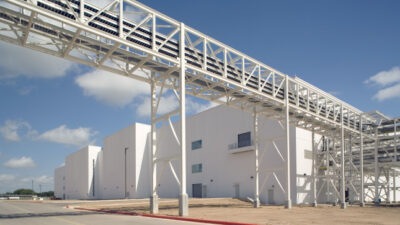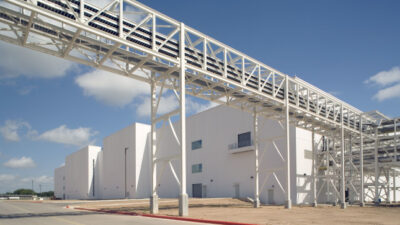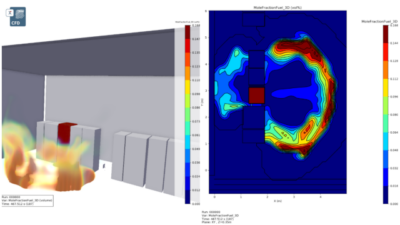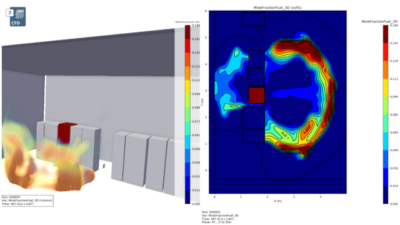Learn how hospitality design can help organizations push new boundaries, achieve competitive differentiation, and bolster recruitment and retention.
Across every market, be it healthcare, education or business, people are understanding design in much more sophisticated ways. Fueled by growing consumerism and shifting generational preferences, people expect better experiences at the hospital, in a college student union and/or in the workplace. They expect immersive experiences that make their lives more enjoyable.
Responding to these shifting expectations, building owners and design teams working in other markets now regularly embrace leading ideas from the world of hospitality and infuse them into their projects. Borrowing these ideas allow organizations to push new boundaries, achieve competitive differentiation, and/or bolster recruitment and retention.
Why Hospitality Design?
The hospitality market has long been delivering valuable immersive experiences for customers and that makes it rich for cross-market ideas and engagement. Whether it’s the warm welcome of the maître d’ at a fine restaurant or the elegant touches at a grand hotel, these efforts and moments positively impact the human experience and can make all the difference for guests. Today’s generation values experience more than its predecessors and is often willing to pay for it. This means hospitality design will have more opportunities and more impact informing projects in other markets moving forward. We should be designing to create memorable impressions, conscientious touch points for users, in as many places as possible and ensuring equity across all cultures and economic boundaries who experience those spaces.
Where can hospitality design have the most value?
There are so many ways hospitality design can influence other markets, consider the following:
HEALTHCARE
Healthcare is a challenging field for those who work in it. Long hours and constant stress are ever-present realities for employees resulting in burnout and turnover. While healthcare organizations spend a great deal of time and investment on creating incredible patient experiences, they should turn to hospitality to elevate staff experiences. Just as hotels provide areas of respite for guests or public spaces connect visitors to nature, healthcare spaces should strive to do the same. UC San Diego Health’s Jacobs Medical Center is a positive example of this as it infuses numerous elevated gardens and terraces along with public art where staff can pause for rejuvenation during the day. The building’s curvilinear form also promotes natural movement and ensures maximum daylighting for both staff and patients.
Beyond promoting staff health, the infusion of hospitality design elements here helps strengthen recruitment and retention. With competition for talent at all-time highs in the medical field and new generations that value work/life balance and access to wellness amenities on par with salary increases – such a design strategy is imperative for healthcare organizations seeking to employ the best and brightest.
EDUCATION
College campuses are ripe for hospitality design’s influence as students literally spend their entire days there – they sleep and study in residence halls, they socialize in student unions, they eat in dining halls. All of these spaces are ripe for design intervention but there’s definitely a disconnect between today’s and tomorrow’s learners and long-established assumptions about residence hall furniture. Future students require spaces and furniture that not only support individual, focused study, but also collaboration, socializing and wellness.
Princeton University has been engaging students, administration and staff over the past year to understand what wants, needs and expectations future students will have for res hall furniture, and expect to share results later this year. They have anchored their approach in the idea that these college halls should feel like "home" while accommodating diverse and rapidly evolving ways of studying. Not surprisingly, hospitality resonates loudly in the initial findings and results Princeton is developing.
SCIENCE + RESEARCH
Similar to healthcare, the world of research requires long days and nights in laboratories. Historically, lab spaces were often reserved for facility basements or the core of buildings where light can’t penetrate. These design and location decisions do nothing to benefit researchers’ wellbeing, can stifle idea sharing and collaboration and are light years away from cultivating positive immersive experiences.
Today, premier research labs do the opposite – they embrace transparency, nature and wellness. CJ Blossom Park in South Korea, the 2018 Lab of the Year, offers researchers extensive access to nature, sleeping pods for rest, a living green wall, water features, a fitness center, an extensive café with healthy food options and a myriad of spaces to choose from; collaboration zones, quiet work areas, focused team rooms, places of respite, etc. Certain images of the research building make it look more like a wellness spa than an epicenter for nonstop research and development; R&D Magazine praised it for its ability to offer "Science Without Stress."
While all employees are different, they share one common reality – the need to spend large amounts of time in the workplace, simply working. Companies seeking to lure and retain top talent are infusing more hospitality-like elements (living walls, fitness centers, walking trails, amenity stations, etc.) into their workplaces to differentiate themselves.
This push for hospitality design in the workplace will fuel bold ideas. Earlier this year, our team designed Sona – a mobile lactation pod for working mothers. Taking into account the taboo nature of "pumping" at work, the design team developed Sona as an experience-driven, mobile pod to meet and exceed the needs of women who choose to pump in the workplace. From the outset of the design challenge, we asked ourselves: How can we make this a positive experience for women and leaned-on hospitality design principles. The project is currently in development and hopefully headed to workplaces in the near future.
Other markets reliance on hospitality design ideas will only grow stronger as students, healthcare staff and consumers continue to push for more experience-driven design. It’s an exciting paradigm shift and organizations who can lead the way and differentiate themselves for future success.
Tina Manis, interior design leader, CannonDesign. This article originally appeared on CannonDesign’s blog. CannonDesign is a CFE Media content partner.



